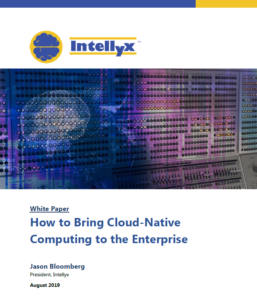As the complexity of modern IT continues to explode with no limits in sight, organizations are increasingly leveraging cloud-native computing to bring the best practices of the cloud to their entire IT organization.
 An essential enabling technology for this next-generation approach to architecting IT infrastructure is the use of containers in conjunction with the Kubernetes container orchestration platform.
An essential enabling technology for this next-generation approach to architecting IT infrastructure is the use of containers in conjunction with the Kubernetes container orchestration platform.
Containers bring dramatically improved flexibility to the applications that enterprises put in front of customers but lack a sufficiently comprehensive way to maintain persistent information over time because containers are inherently stateless.
Managing state information in such a stateless environment, therefore, is one of the primary challenges facing enterprise deployments of Kubernetes. Both, ROBIN platform and ROBIN storage, solve the challenges by enabling stateful workloads that follow cloud-native principles.
What is ‘Cloud-Native’?
For all its transformative power and business value, cloud computing has unquestionably been a lightning rod for hype.
This buzzwordiness continues with little hope of abating. Today, it swirls around such terms as cloud-native. In common parlance, cloud-native refers to software that developers have built-in – and for – the cloud.
This concept is strikingly important to how enterprises take advantage of the cloud – and even more so, extend the value of the cloud to their IT organizations at large.
From the enterprise perspective, this definition of cloud-native might apply to some of the new software they’re building, but the cloud-native world would forever be separated from the on-premises context for enterprise IT that has been with us for generations.
Fortunately, this definition is shifting. Today, ‘cloud-native’ is more than ‘cloud only.’ It means bringing cloud-centric best practices to software and IT generally, whether that be in the cloud or on-premises – or both.
Click here for more information and to download paper (no registration required).
ROBIN is an Intellyx customer. Intellyx retains final editorial control of this paper.



